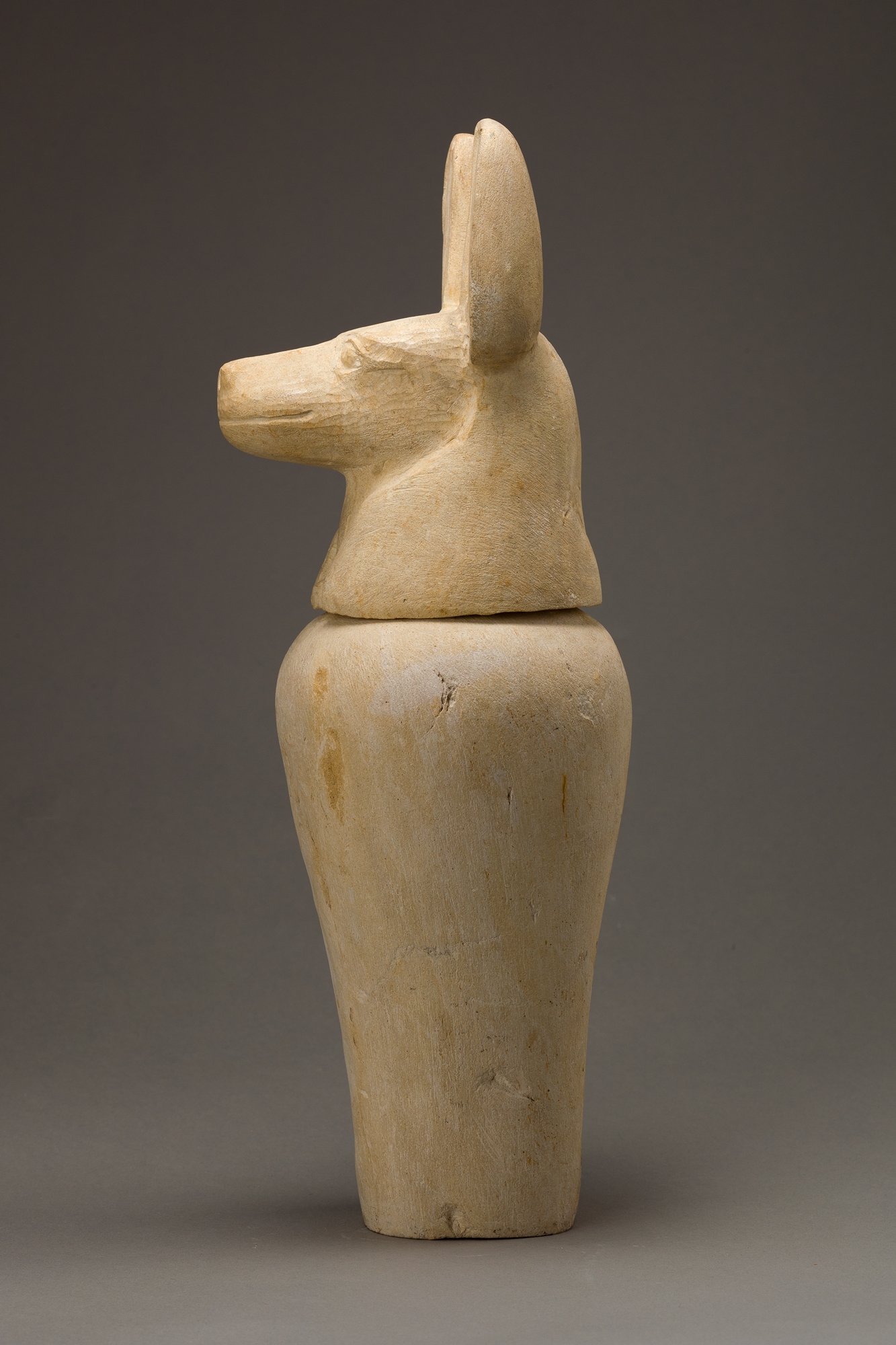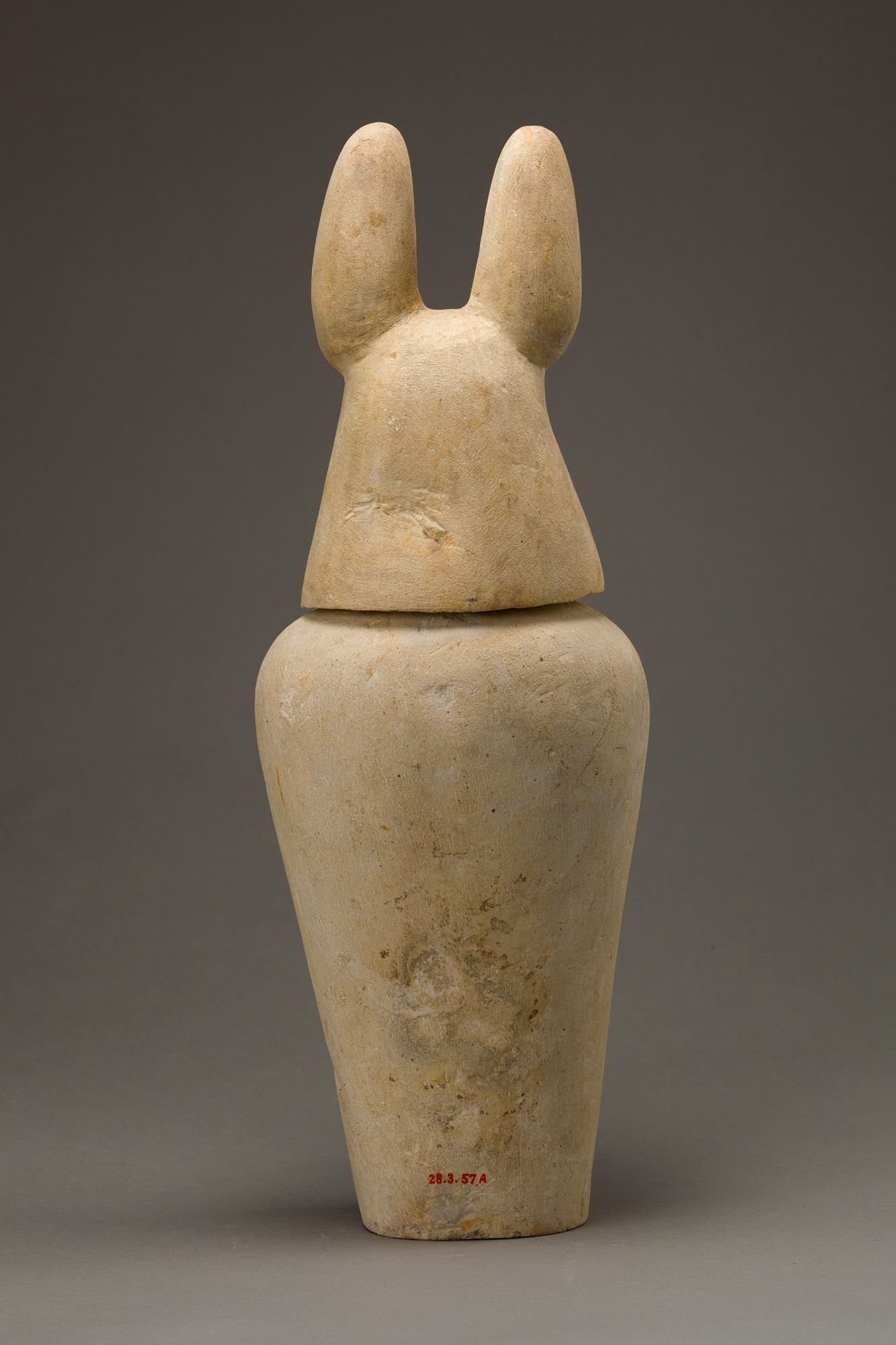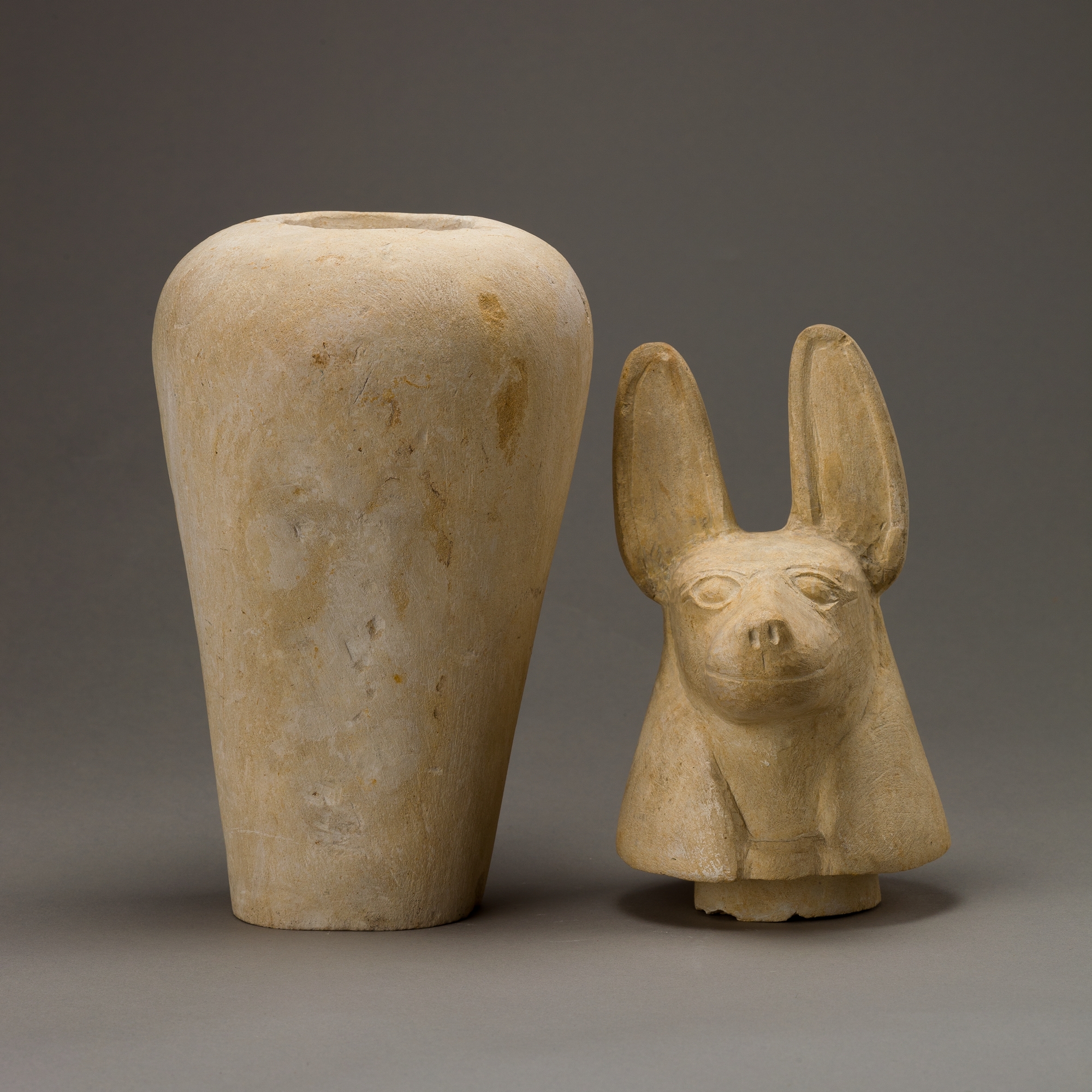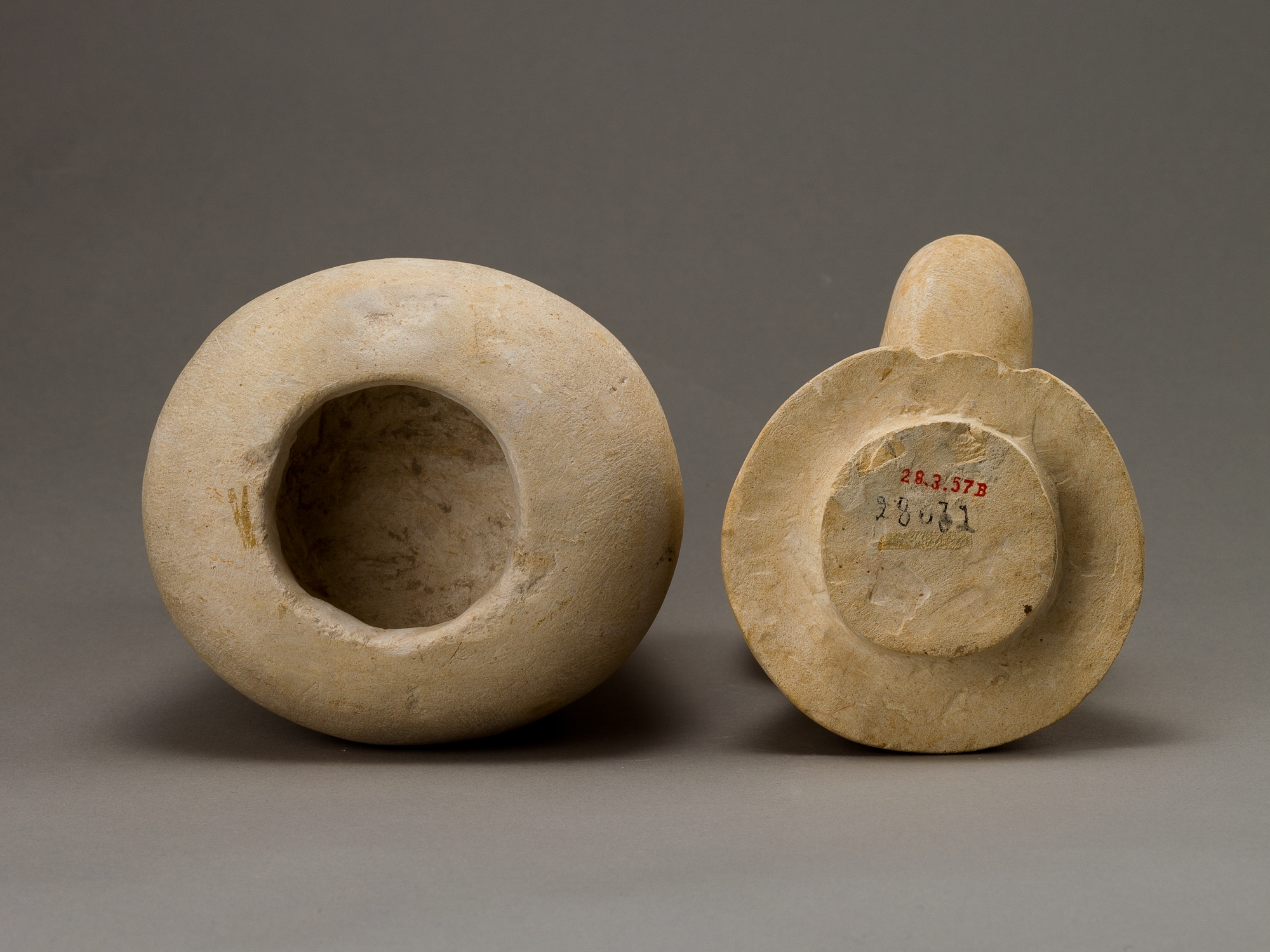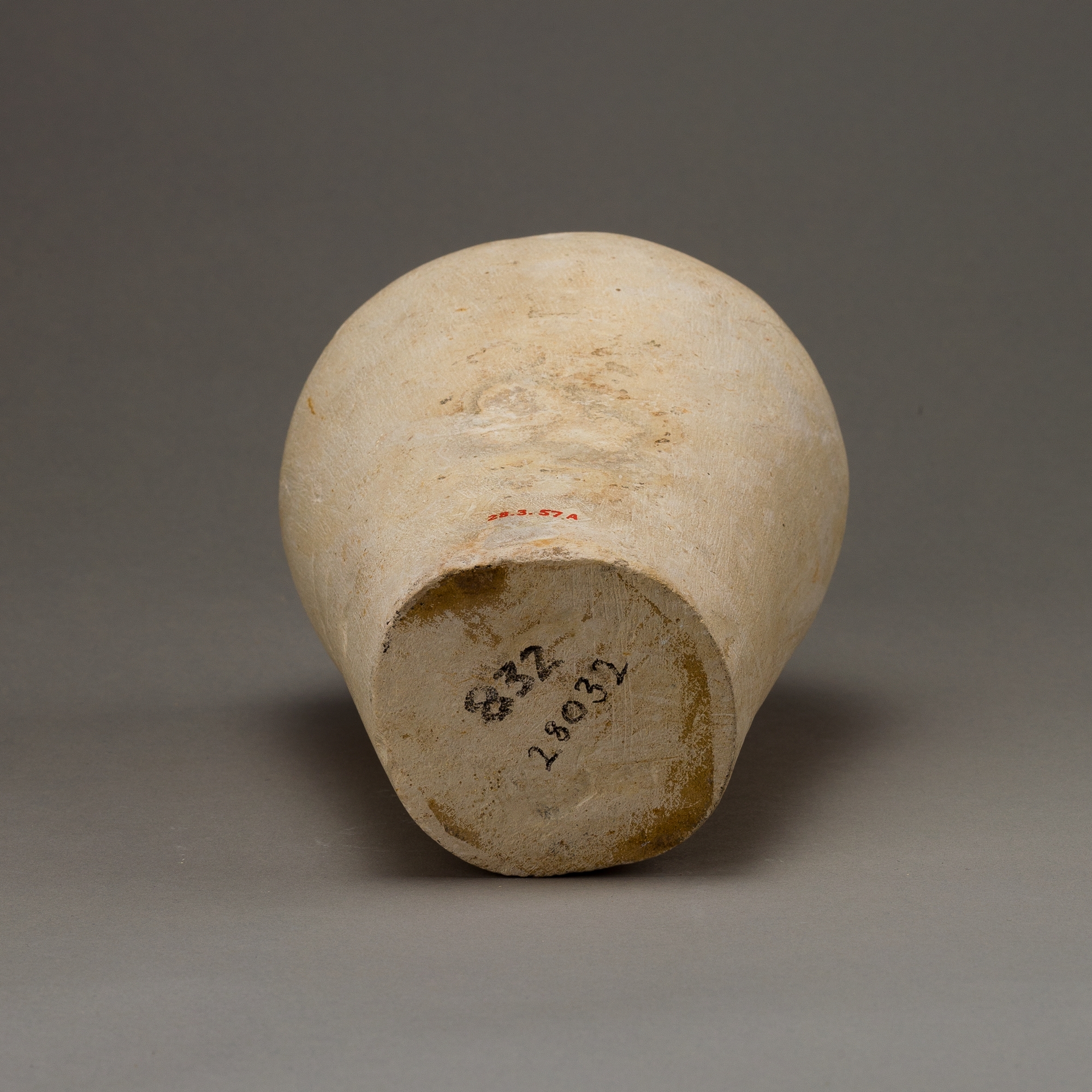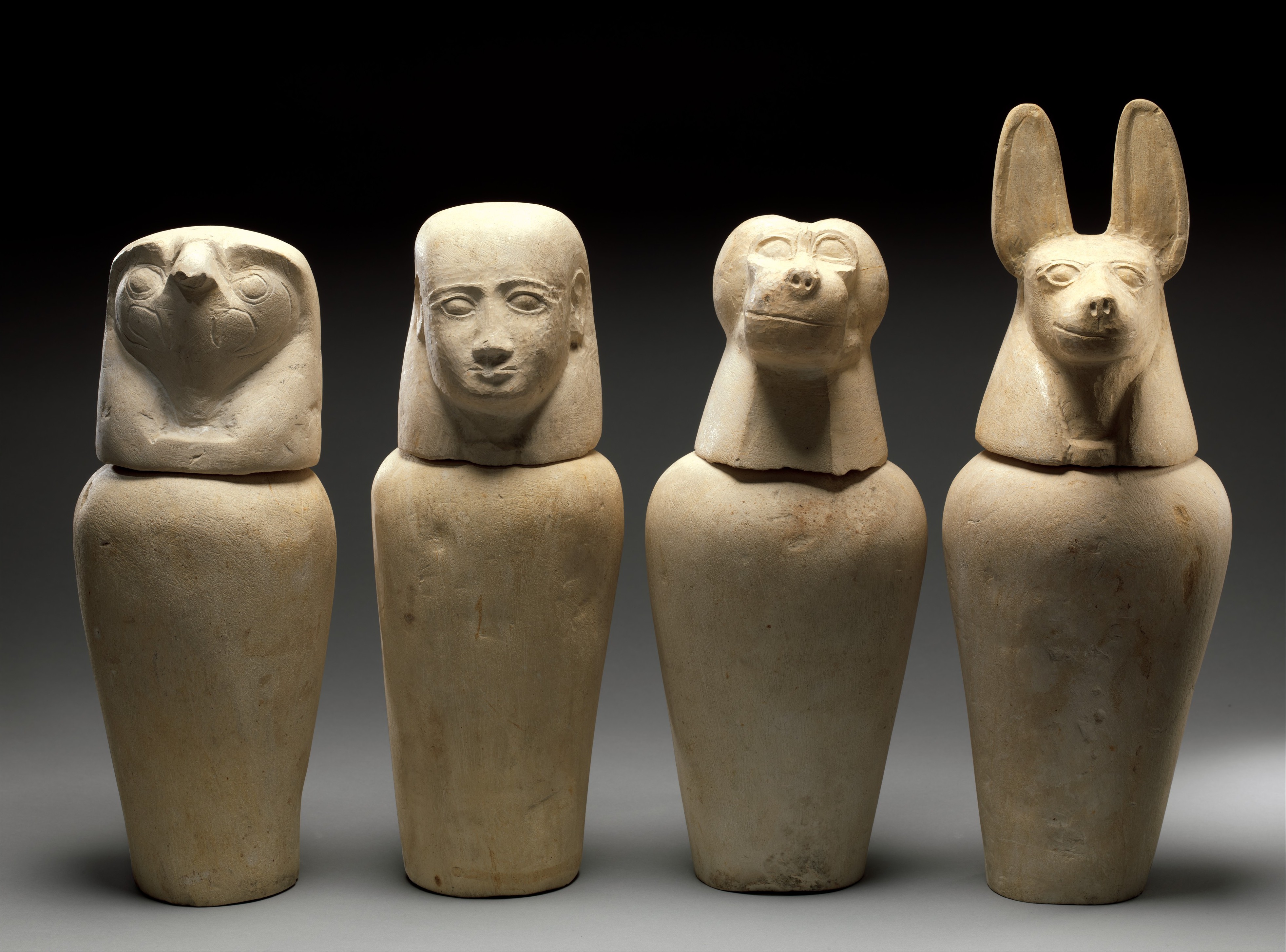Canopic jar with jackal head
Third Intermediate Period
A set of four canopic jars was an important element of the burial in most periods of Ancient Egyptian history. Canopic jars were containers in which the separately mummified organs would be placed. The best known versions of these jars have lids in the shape of the heads of protective deities called the four Sons of Horus. The human-headed Imsety was the guardian of the liver; the baboon-headed Hapy looked after the lungs; the jackal-headed Duamutef was responsible for the stomach; and the falcon-headed Qebehsenuef cared for the intestines.
The lid of the jar here is removable, but the cavity is not large enough to hold an organ. The "dummy" jar dates to a period during which the internal organs were mummified and then placed back into the mummy, but canopic jars continued to be included as part of the burial equipment in order to ensure the protection of the four Sons of Horus.
Canopic jars from two different burials were found in the same tomb shaft. For two other jars from this set, see 28.3.56 and 28.3.58. For jars from the second set, see 28.3.59 and 28.3.61.
Due to rights restrictions, this image cannot be enlarged, viewed at full screen, or downloaded.
This artwork is meant to be viewed from right to left. Scroll left to view more.


